Optical Chip Promises 350x Speedup Over RTX 3080 in Some Algorithms
Claims 350x the power of an RTX 3080 in some workloads.
Lightelligence, a Boston-based photonics company, revealed the world's first small form-factor, photonics-based computing device, meaning it uses light to perform compute operations. The company claims the unit is "hundreds of times faster than a typical computing unit, such as NVIDIA RTX 3080." 350 times faster, to be exact, but that only applies to certain types of applications.
Still in a demo stage, the Photonic Arithmetic Computing Engine (PACE) integrates electronics and photonics in a singular chassis, performing operations at the speed of light and thus achieving extreme acceleration for certain AI, Deep Learning, and Machine Learning compute workloads.
PACE accelerates certain matrix acceleration applications so much faster than NVIDIA's RTX 3080 because of the very nature of its computing elements. It's easy enough to understand: latency, which is the frame of time between when an event is ordered to happen and when it actually happens, is much, much lower on Lightelligence's system. That's the benefit of data traveling around at the speed of light.
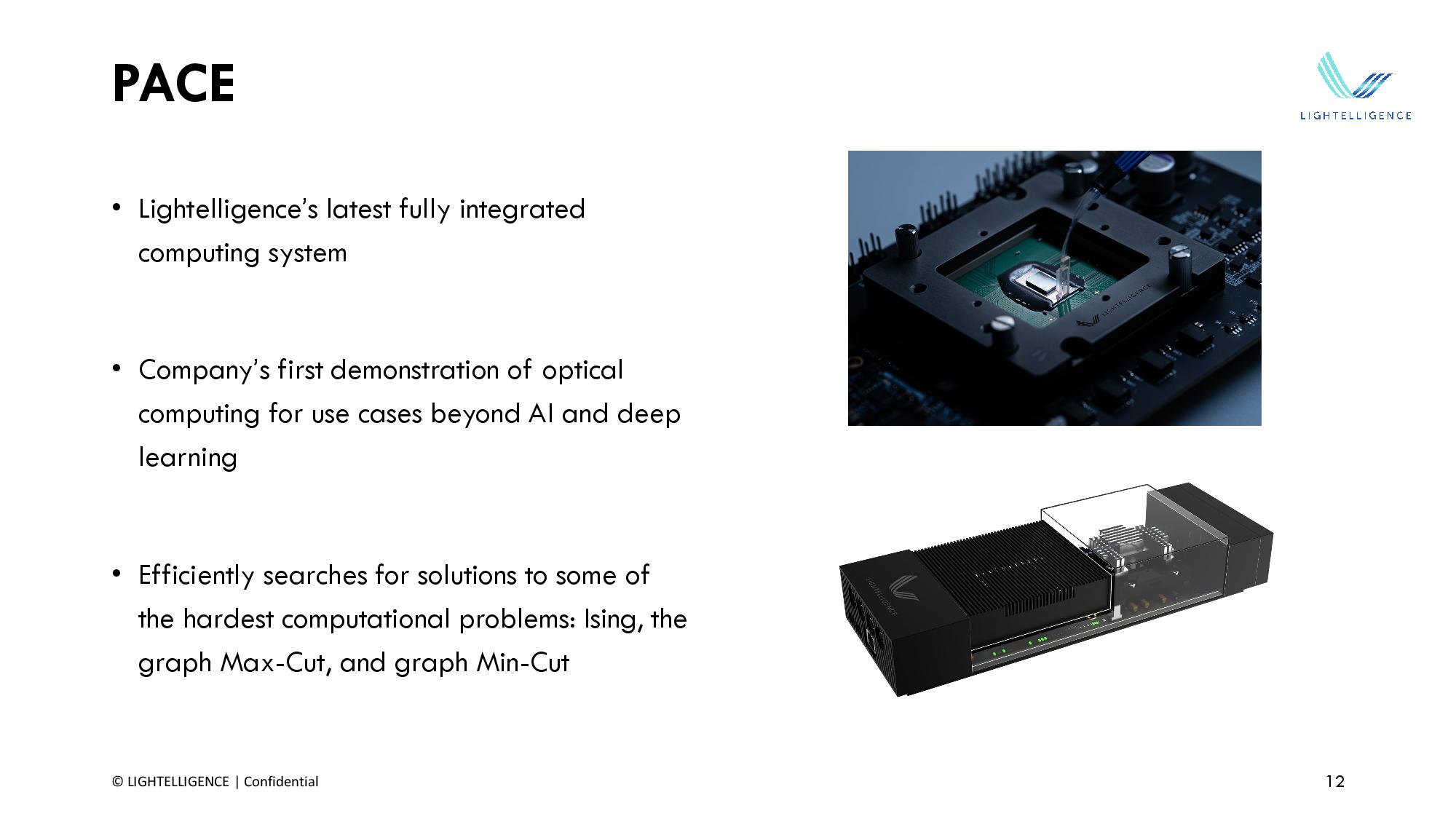
To achieve this, Lightelligence knew it would have to focus not only on the optical capabilities of the PACE but also on traditional semiconductors and software solutions linking the two. The company thus describes itself as a hardware and software provider; the company has also designed algorithms specifically designed to crack some of the most fundamental computing problems of today in a photonic environment.
"One of Lightelligence's unique advantages over other companies developing optical computing is our ability to co-design many different domains together," said Erwan Di Vita, lead engineer for PACE at Lightelligence. "Our photonic engineers work alongside analog, digital, packaging, and software engineers to design the chips, which are then manufactured and built into 3D systems by our post-silicon teams. Without such innovations from our opto-electronic packaging team, none of this would be possible."
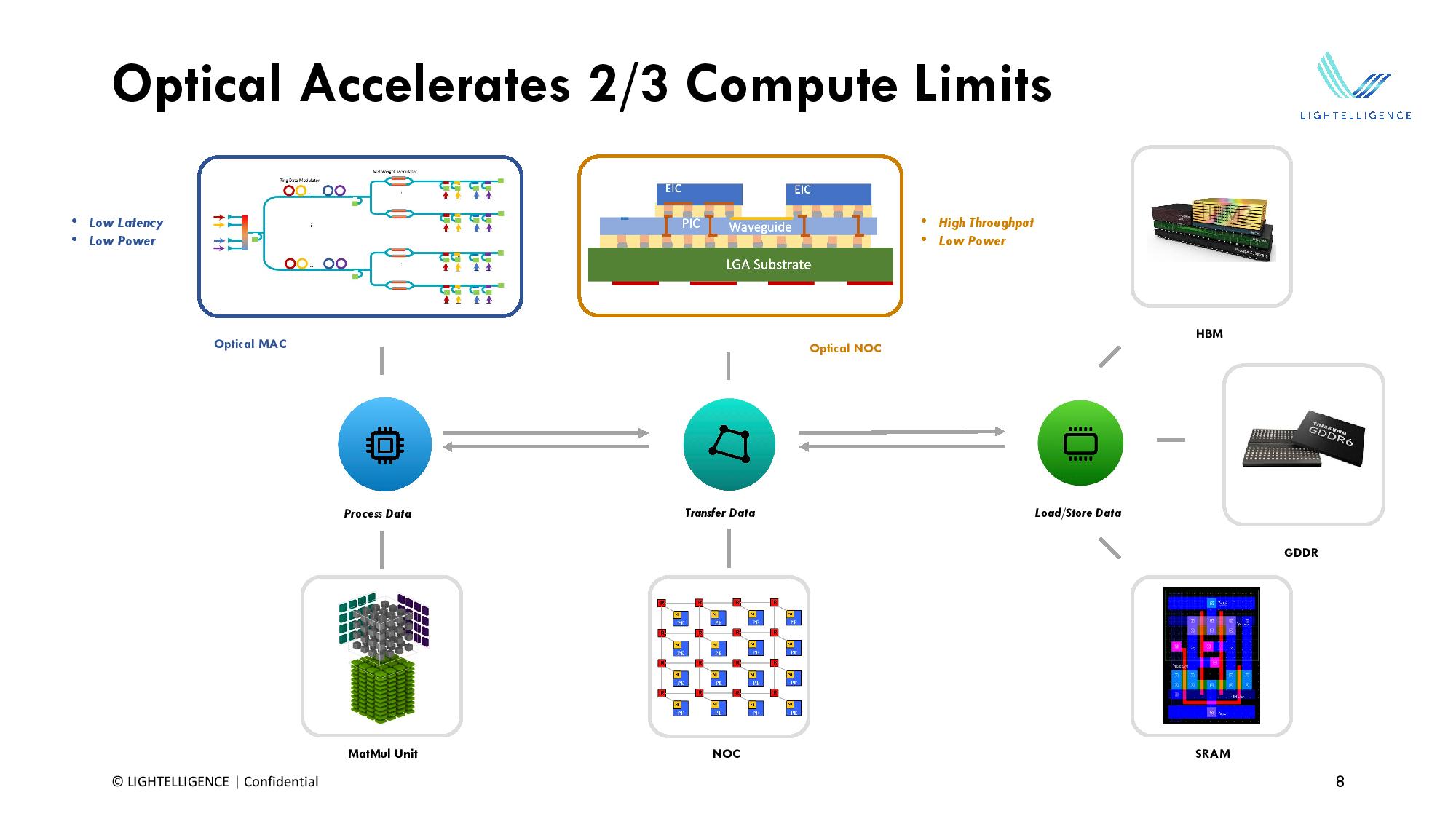
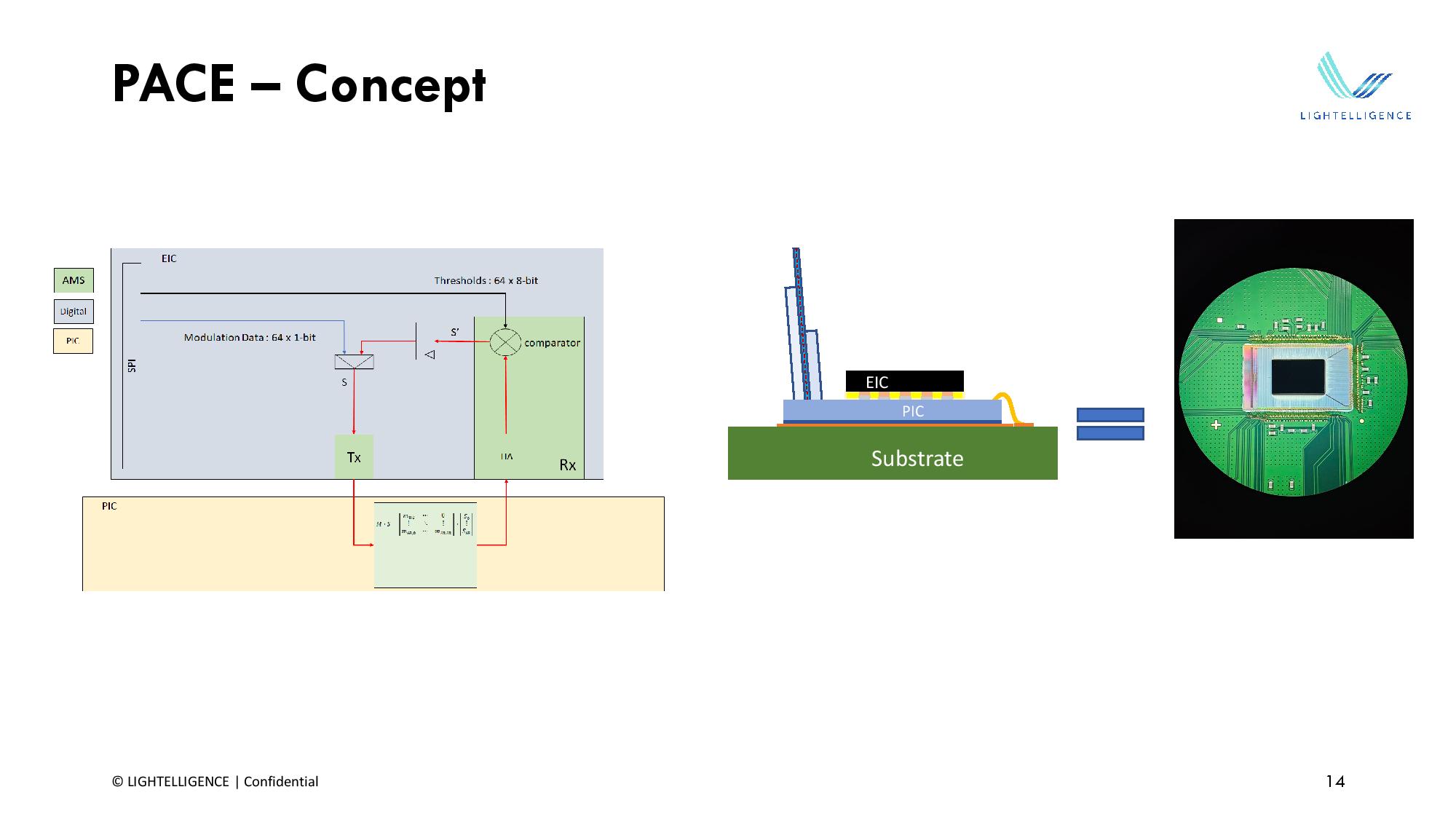
The PACE is a somewhat narrow engine when it comes to what exact workloads it can execute. But, as the company says, "PACE efficiently searches for solutions to several of the hardest computational math problems, including the Ising problem, and the graph Max-Cut and Min-Cut problems, illustrating the real-world potential of integrated photonics in advanced computation." In that perspective, we can classify it as an ASIC (Application-Specific Integrated Circuit) of sorts: it does very few things (or a single thing) very, very well.
As Yichen Shen, Ph.D., founder and CEO of Lightelligence, put it, "These problems belong to an important class of intractable mathematical problems known as NP-complete which have stumped mathematicians for the last 50 years," he said. "Algorithms for NP-complete problems are important because these problems can be mapped to each other, and they have hundreds of practical applications in fields that include cryptography, power grid optimization and advanced image analysis. The progress we've made on NP-complete combinatorial optimization problems illustrates the potential of our technology to transform computing."
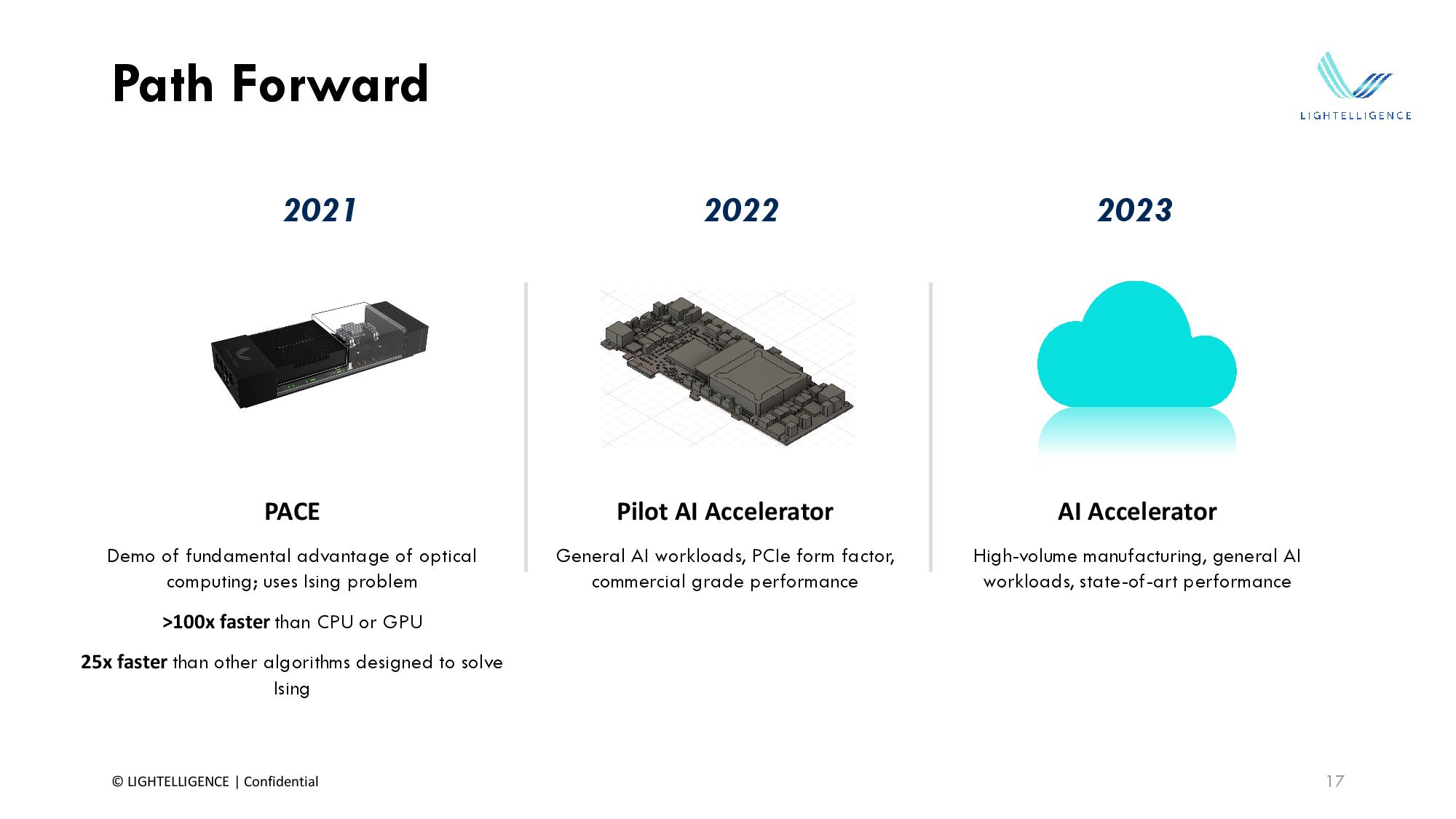
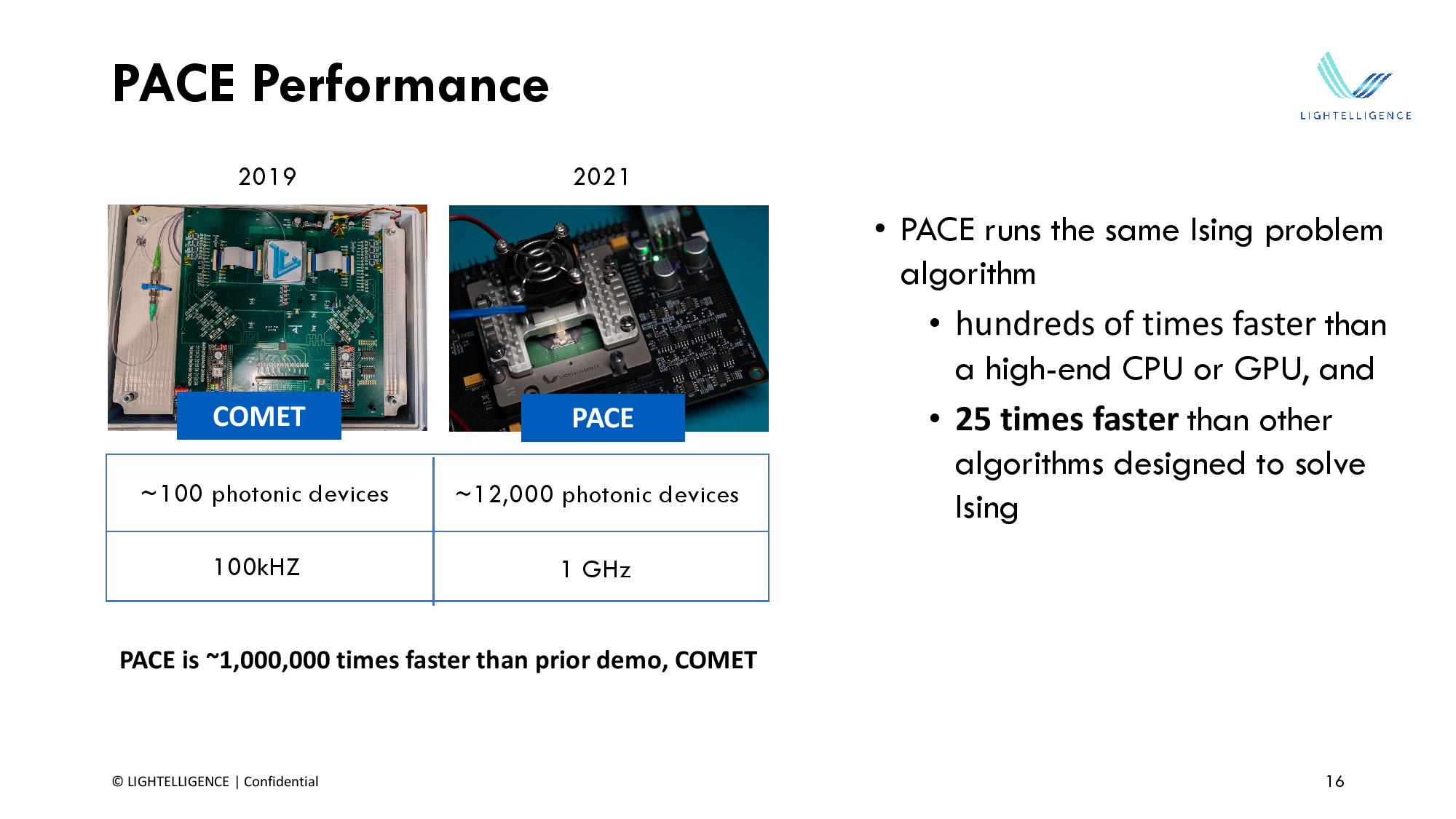
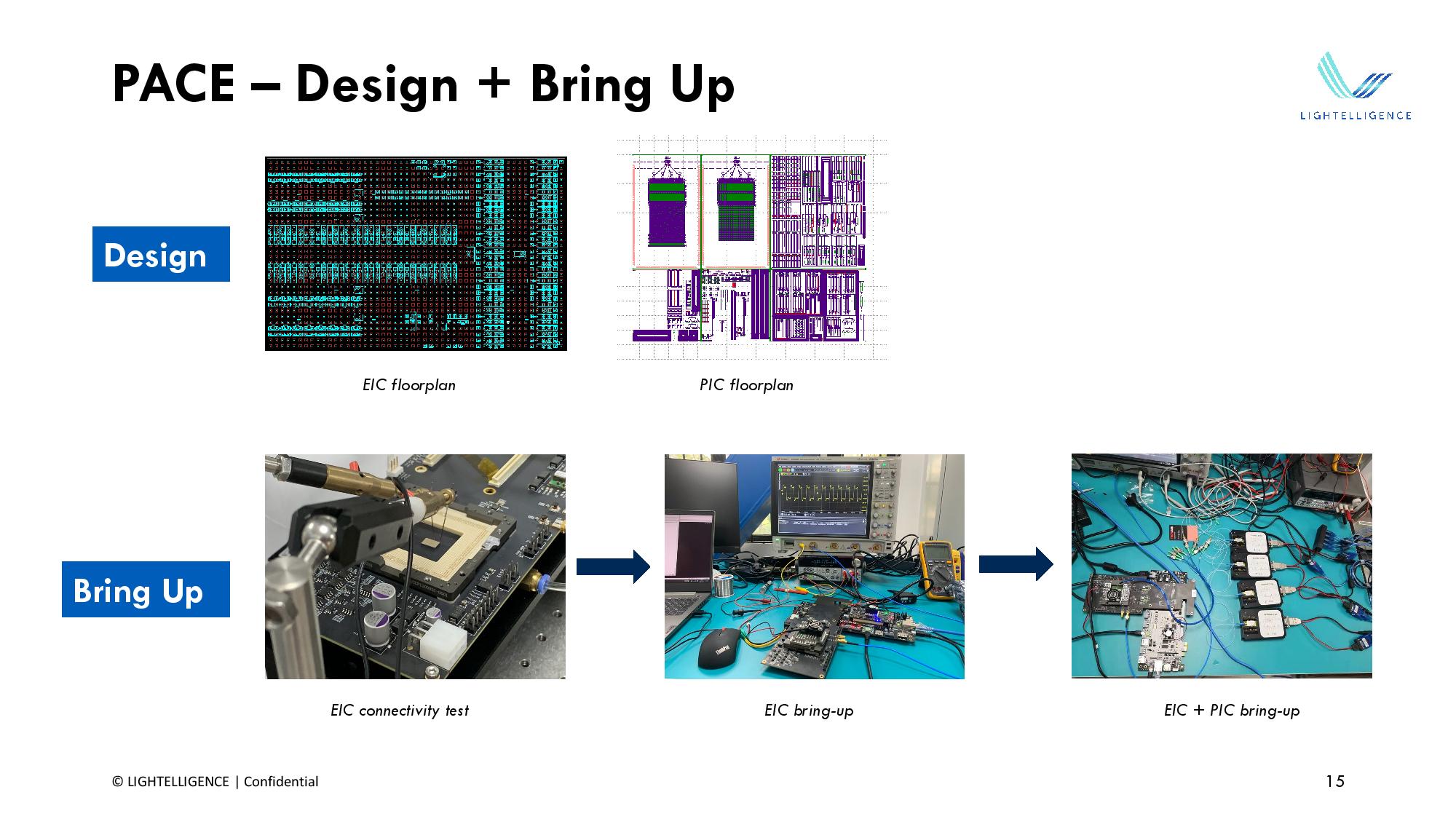
However, the PACE achieves that coveted specialization through an added field of computing - which not only makes the system faster, it makes it incredibly more efficient. While traditional semiconductor systems have the issue of excess heat that results from running current through nanometre-level features at sometimes ludicrous frequencies, the photonic system processes its workloads with zero Ohmic heating — there's no heat produced from current resistance. Instead, it's all about light.
Get Tom's Hardware's best news and in-depth reviews, straight to your inbox.
Lightelligence is built around its CEO's Ph.d. thesis - and the legitimacy it provides. This is so because when "Deep Learning with Coherent Nanophotonic Circuits" was published in Nature in 2017, Lightelligence's CEO and founder Yichen Chen had already foreseen a path for optical circuits to be at the forefront of Machine Learning computing efforts. By 2020, the company had already received $100 million in funding and employed around 150 employees. A year later, Lightspeed has achieved a dem product that it says is "hundreds of times faster than a typical computing unit, such as NVIDIA RTX 3080". 350 times faster, to be clear.
The PACE's debut aims to charm enough capital to comfortably reach its goal of launching a pilot AI accelerator product to the market in 2022. That's still only a stretch goal in the company's vision, however, its goal is to develop and distribute a mass-market, photonics-based hardware solution as early as 2023, targeting the Cloud AI, Finance, and Retail markets. Considering how Lightelligence managed to improve the company's 2019 COMET design performance by a factor of a million with PACE in a span of two years, it'll be interesting to see where their efforts take them when it comes to launching.

Francisco Pires is a freelance news writer for Tom's Hardware with a soft side for quantum computing.
-
thisisaname Comparing it's fastest thing with the slowest of the 3080?Reply
Is it 350 or 25 times, I see 350 in the article but 25 time in the snippet in the first post. -
renz496 Then nvidia will just adopt similar tech for their gpu. In the past that's how nvidia end up adopting tensor core with their GV100 to accelerate ML performance, retiring GP100 just a year after it's initial launch.Reply -
jkflipflop98 Yes, another optical based chip that's going to blow the doors off everything else. Where have I heard this one before?Reply -
Krotow Replyjkflipflop98 said:Yes, another optical based chip that's going to blow the doors off everything else. Where have I heard this one before?
If it will be just enough for mining, it will have glorious future :D -
deesider Reply
25 times refers to the speed increase compared to an ASIC designed for that problemthisisaname said:Comparing it's fastest thing with the slowest of the 3080?
Is it 350 or 25 times, I see 350 in the article but 25 time in the snippet in the first post.
